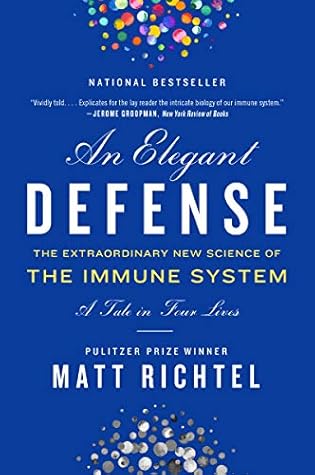The paper was short, less than two pages, in BMJ, titled “Hay Fever, Hygiene, and Household Size.” The author looked at the prevalence of hay fever among 17,414 children born in March of 1958. Of sixteen variables the scientist explored, he described a “most striking” association between the likelihood that a child would get hay fever allergy and the number of his or her siblings. It was an inverse relationship, meaning the more siblings the child had, the less likely it was that he or she would get the allergy. Not just that, but the children least likely to get allergies—also known as atopic
...more
Welcome back. Just a moment while we sign you in to your Goodreads account.


